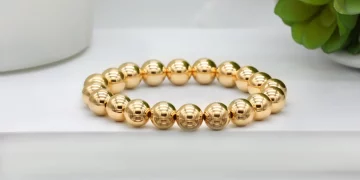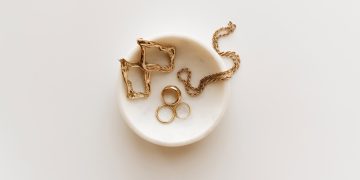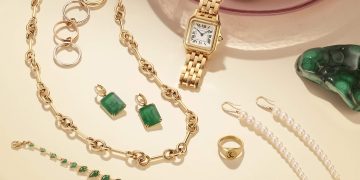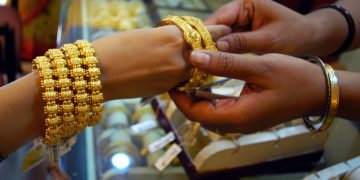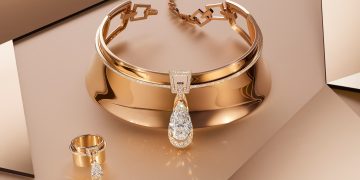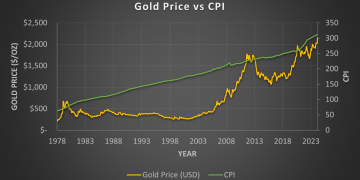Introduction: The Intersection of Luxury and Pure Gold
When it comes to high-end jewelry, two distinct factors typically define its value: the allure of luxury brands and the intrinsic value of pure gold. The global market for luxury jewelry has seen significant growth in recent years, with consumers increasingly drawn to designer pieces from renowned brands such as Cartier, Tiffany & Co., and Bulgari. At the same time, pure gold has maintained its reputation as a stable investment asset, known for its timeless value.
The question arises: where does the true investment lie—within the brand premium of high-end luxury jewelry or in the metal value of pure gold? This article delves into the shifting dynamics of the luxury jewelry market, examining how the brand value of luxury jewelry contrasts with the metal value of pure gold, and how these elements influence investment strategies.
Brand Premium vs Metal Value: Where the Real Investment Lies
Luxury jewelry is often perceived as an investment in more than just gold or precious stones; it’s an investment in the brand. The brand premium refers to the extra value attached to a piece of jewelry due to the prestige, reputation, and desirability of the brand name behind it. Think of iconic luxury houses like Chanel, Louis Vuitton, or Rolex. Their jewelry collections can command premiums far beyond the value of the precious metals and gemstones used in the designs. This brand premium is partly based on the craftsmanship, exclusivity, and history associated with these brands.
On the other hand, pure gold—regardless of the brand—has an intrinsic value. It is considered a universal asset, easily tradable and widely accepted as a store of value. The price of gold fluctuates according to global economic conditions, but the metal itself remains one of the most stable investments over time. Unlike luxury brands, which may face market volatility or changing trends, gold’s value is rooted in its rarity, historical significance, and demand across various industries, including electronics, dentistry, and of course, jewelry.
While luxury jewelry brands can provide significant investment returns due to their exclusivity and high demand, the pure gold value can also deliver steady long-term appreciation. For investors looking for stability, pure gold may seem like the safer option. However, for those who are willing to take on a higher level of risk for potentially greater returns, luxury brand jewelry could provide an intriguing alternative.

Luxury Trends Shifting Jewelry Investment Strategies
As the market for high-end jewelry evolves, so do the investment strategies that accompany it. One of the most significant trends in recent years is the growing interest in investing in pieces from luxury brands that are limited edition or from rare collections. Collectors and investors alike have begun to recognize the value of exclusivity, and limited-edition collections often carry a much higher resale value due to their scarcity. The intersection of luxury and rarity is driving a shift in how investors approach jewelry, with many now viewing limited-edition designer pieces as more valuable than traditional gold investments.
Another key trend influencing jewelry investment strategies is the increasing influence of social media and celebrity endorsements. High-profile personalities and influencers have been instrumental in creating demand for certain luxury jewelry brands, with specific pieces often gaining iconic status. These celebrity-endorsed items can see their value increase exponentially over time as demand rises, and the trend of “buying what’s hot” continues to gain traction among investors looking to make profitable returns.
Additionally, the surge in interest in sustainable and ethically sourced luxury goods is also changing investment strategies in high-end jewelry. With growing awareness around environmental and social issues, more consumers and investors are seeking jewelry that aligns with their values. Brands that focus on ethical sourcing, sustainable practices, and transparent supply chains are increasingly attracting the attention of a new generation of investors. This shift toward sustainability is reshaping the luxury jewelry landscape and providing new opportunities for those looking to invest in pieces that are not only stylish but also ethically responsible.
The Role of Design and Craftsmanship in Luxury Jewelry Investment
When considering luxury jewelry as an investment, design and craftsmanship are equally important factors. The intricate designs and superior craftsmanship that luxury brands are known for contribute significantly to the overall value of their pieces. These elements are what set luxury brand jewelry apart from other pieces, and they can drastically affect resale values.
Jewelry collectors often seek out pieces with unique designs, as these can offer a significant return on investment. For example, vintage pieces from renowned designers or discontinued collections can become highly sought-after items, commanding higher prices than more readily available pieces. The value of these items often rises over time, especially if they have historical or cultural significance.
In contrast, gold jewelry, while undeniably valuable, is primarily valued based on the weight and purity of the metal, rather than the design or craftsmanship. This means that, while gold jewelry may not see the same level of appreciation as luxury brand pieces, it offers a more straightforward investment option for those looking to capitalize on the metal’s market fluctuations.
The Volatility of the Luxury Jewelry Market
One of the key risks associated with investing in luxury brand jewelry is market volatility. The value of luxury jewelry is often influenced by factors such as brand perception, consumer trends, and economic cycles. For example, the popularity of a particular brand or collection can wax and wane, causing fluctuations in the prices of pieces from that brand. Additionally, the luxury jewelry market can be highly affected by shifts in global economic conditions, as high-net-worth individuals—who are typically the primary buyers of luxury goods—may reduce their spending during periods of economic uncertainty.
In contrast, pure gold tends to offer more stability. While gold prices do fluctuate based on global economic factors, they are generally less volatile than the luxury goods market. Gold remains a safe haven asset, especially in times of financial crisis or geopolitical instability. As such, gold jewelry tends to maintain a more consistent value over time, making it a safer option for those looking to hedge against market volatility.
Diversification: Combining Luxury and Pure Gold in Investment Portfolios
For investors looking to build a well-rounded portfolio, diversification is key. By combining luxury brand jewelry with pure gold investments, individuals can benefit from both the stability of gold and the potential high returns of luxury brand pieces. A diversified approach allows investors to spread their risk while taking advantage of different market opportunities.
For example, investors may choose to allocate a portion of their portfolio to high-end luxury jewelry pieces, particularly those from limited-edition collections or rare designs. These pieces can provide the potential for significant appreciation in value over time, especially if they become highly sought after by collectors. Meanwhile, pure gold can act as a stabilizing force in the portfolio, offering a reliable store of value and protection against inflation.
Incorporating both types of assets into a portfolio allows investors to balance the potential for high returns with the security of a more stable investment. The key to successful diversification lies in understanding the dynamics of both markets and selecting pieces that complement each other.
Conclusion: Where the True Value Lies
When it comes to high-end jewelry investment, both luxury brands and pure gold have their unique advantages. Luxury brand jewelry offers the potential for high returns, especially for those investing in limited-edition or rare pieces. These items benefit from the brand premium, design, and craftsmanship that set them apart, but they are also subject to market volatility and shifting consumer trends. On the other hand, pure gold provides a more stable, predictable investment, with its value rooted in the metal’s intrinsic properties and historical significance.
Ultimately, the choice between investing in luxury brand jewelry or pure gold depends on an investor’s goals, risk tolerance, and market outlook. For those seeking higher returns and willing to embrace a degree of volatility, luxury brand jewelry offers an exciting opportunity. For those seeking stability and long-term preservation of wealth, pure gold remains a solid investment option.
By understanding the dynamics of both markets, investors can create a strategy that aligns with their financial objectives, balancing the allure of luxury with the security of gold.

